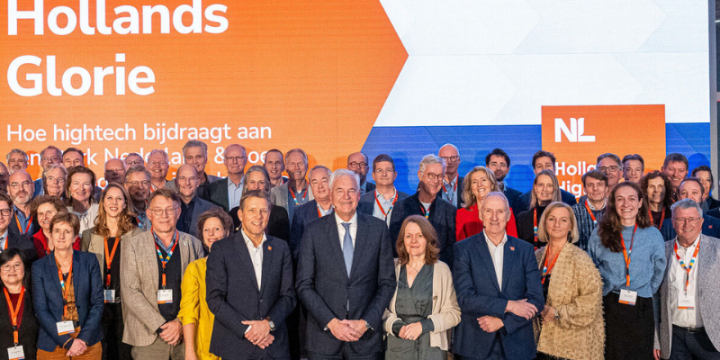Researchers from TNO and a consortium have succeeded in sending data from a satellite to a ground station on earth using self-developed laser communication technology. This is the first time that this has been achieved with a Dutch satellite instrument. This technology, which works with invisible laser signals, enables much faster and safer data traffic than the radio frequencies that are still used everywhere for communication. The optical ground station in The Hague was developed by TNO in collaboration with, among others, Airbus Netherlands, both part of our roadmap Space.
Today in the media
Laser satellite communication
Almost all connections in daily life, such as Wi-Fi, Bluetooth or 5G, are based on radio frequency waves. Partly due to the increase in data consumption, this radio frequency spectrum is slowly filling up, creating scarcity and interference. Laser satellite communication offers a solution because it can send data faster and more securely via invisible laser signals. Radio frequencies achieve speeds of hundreds of megabits, in some cases several gigabits per second (Gbps). Laser communication achieves speeds of 100 to 1000 times faster. Laser communication links are interesting even at lower speeds because systems are much smaller, lighter and more energy efficient, which is important for space applications. It is also more secure because very narrow optical laser beams are used instead of wide radio signals. This makes eavesdropping more difficult, and interference is quickly detected.
Kees Buijsrogge (Director TNO Space):
This pivotal milestone marks a significant achievement in advancing technological sovereignty for both the Netherlands and Europe in a strong NATO, as it will enable faster and more secure broadband connectivity. It’s a provisional outcome of collaborative endeavors within a nascent Dutch industry specializing in optical satellite communication.
How does lastersatelite communication work?
Experiments
The laser communication system, SmallCAT (Small Communication Active Terminal), was launched in April 2023 by SpaceX aboard a satellite that is operated by the Norwegian Space Agency. Since then, TNO has been preparing to establish a connection between the satellite, which flies in low Earth orbit, and optical ground stations in The Hague (TNO) and Tenerife (ESA ESOC’s IZN-1). During such an experiment, the ground station first sends a signal to the satellite, where it has to be found by the laser communication system on board through its overpass. It then sends its laser back to Earth where the ground station needs to capture it. This is incredibly challenging because the satellite is flying at an altitude of 500 kilometres at a speed of 28,000 kilometres per hour. During several experiments TNO succeeded in finding both ground stations from space and sending back and recapturing the laser beams with extreme precision. Once a link was established, data was transferred from the satellite instrument and received by the optical ground station in The Hague at a maximum data rate of one gigabit per second. The ground station at TNO in The Hague was developed by TNO together with Airbus Netherlands. It’s the first time this has been achieved with such a compact satellite instrument of Dutch manufacture. It demonstrates that the terminal on the satellite and the ground station work and can also find each other under real conditions.
Dutch ecosystem
This success is an important step in the development of laser terminals (AAC Clyde Space) and Ground Stations (Airbus Netherlands) for the emerging laser communications market and thus in the creation of an European ecosystem for fast and secure laser satellite communications. Eventually, the laser communication system is intended to communicate with other European optical ground stations that are part of the ‘Optical Nucleus Network’, operated by Norway's KSAT (Kongsberg Satellite Services). Laser satellite communication works best if a network of multiple satellites is built for that purpose. Ultimately a constellation of satellites is needed for a reliable network.
Partners
The satellite instrument is developed by a TNO-led consortium which includes AAC Hyperion (part of AAC Clyde Space) for the onboard electronics, drivers as well as software, and Gooch & Housego (laser transmitter). The development was financed with Netherlands Space Office (NSO) funds through the ESA ARTES ScyLight program and the Dutch Ministry of Defense’s innovation budget. TNO also contributed in co-funding this program. The optical ground station in The Hague is developed by TNO in collaboration with Airbus Netherlands B.V., ASA, and Digos.





